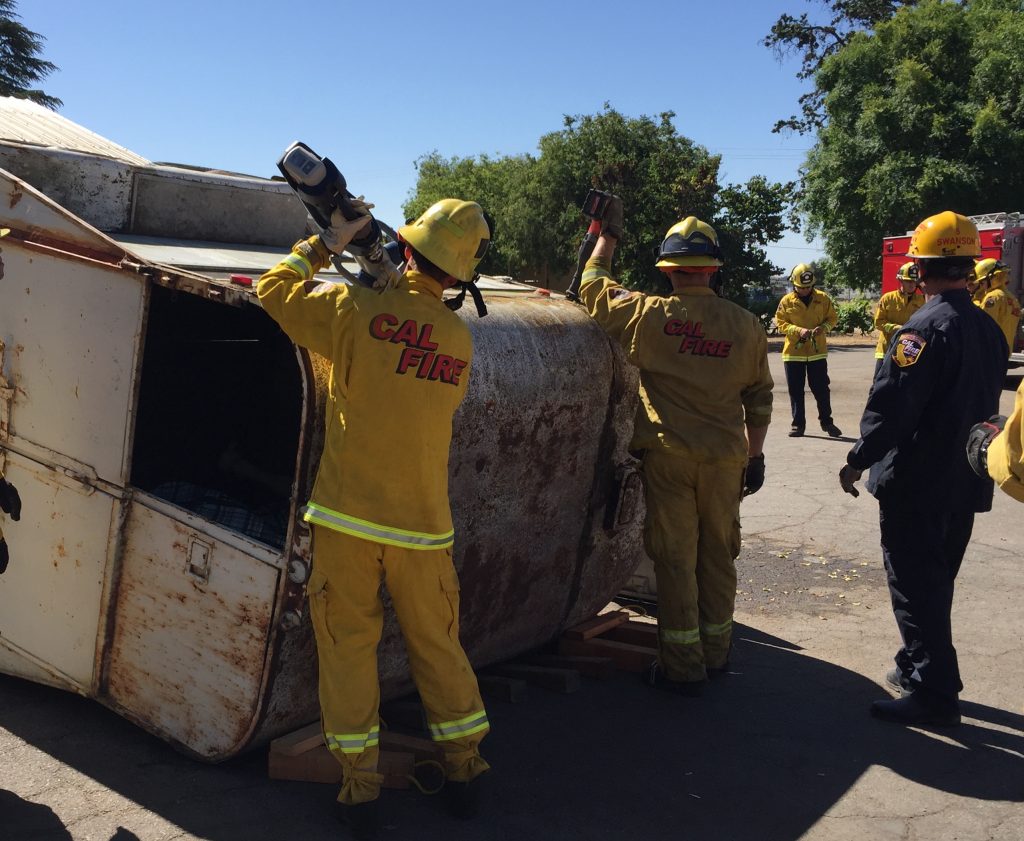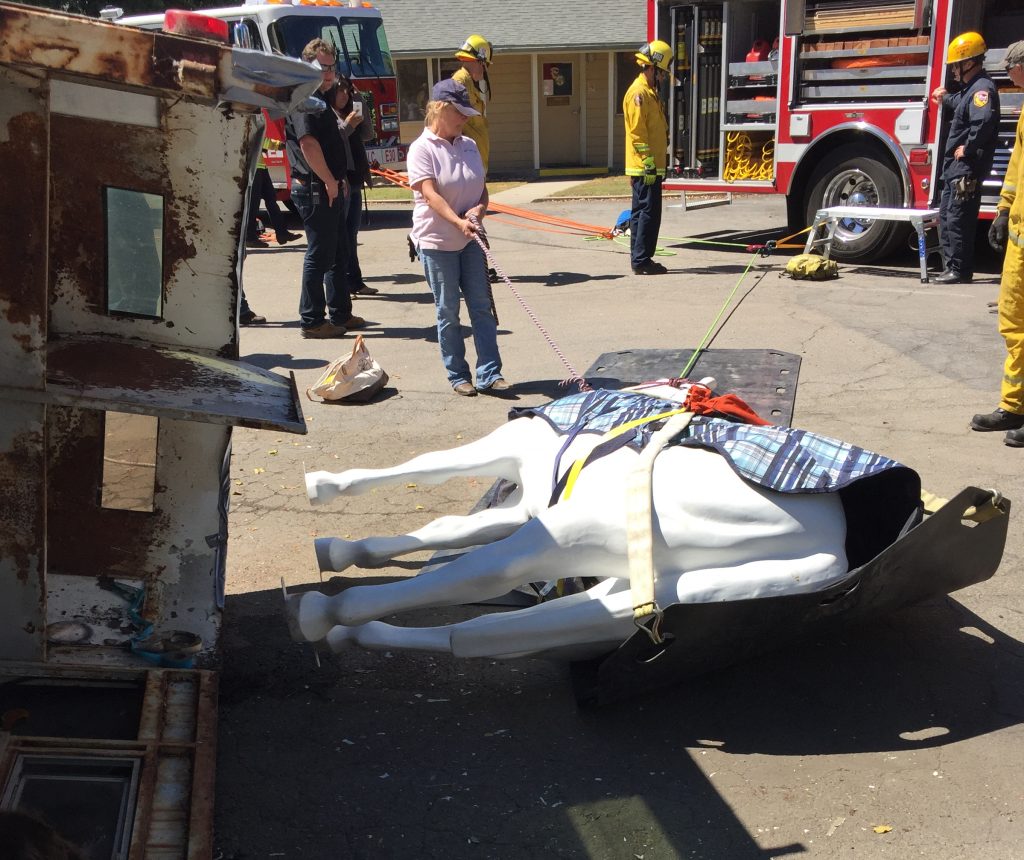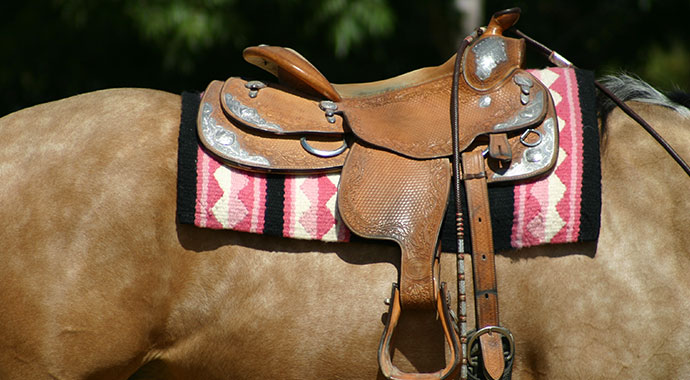What happens if a horse falls down a canyon? Who assists you if your horse gets cast in a difficult position at your barn? Who educates and trains the horse community to be available to assist in times of trouble? Where can you get training on basic first aid and improve your horse trailering skills? When fire comes, does the help know where to find your horses? Who assists the Sheriff’s Department when horses need to be removed from dire situations? Why are the HEET (Horse Emergency Evacuation Team) volunteers so passionate about helping our equestrian community?
Are you prepared to leave your animals with a pet sitter? Help communicate all the vital care instructions with a Horse and Pet Care Communication Checklist.
The answers to all these questions lies in the hearts of the passionate and skilled HEET volunteers.
I recently ran across a team of (Horse Emergency Evacuation Team of San Luis Obispo) HEET volunteers at the local Sheriff’s Day held at the Madonna Inn. Each volunteer I spoke with was passionate and knowledgeable. We talked about the Anderson Sling harness worn by their trusty demo horse. However, Julie Monser, a HEET volunteer remarked, “We do so much more than rescue horses from fires!”
Let’s Take a Look at the Variety of Ways a HEET Volunteer Serves the Equestrian Community
The Anderson Sling Harness
Since we live and ride in areas where canyons can make horse rescue difficult. HEET acquired an Anderson Sling Harness from a donation from SLOPOST to aid in this situation. “If there is a horse down a canyon,” explained Julie, “we now have the ability of performing an airlift with the aid of a CHP Helicopter using the Anderson Sling on the horse.”
The ideal canyon, ravine or ditch rescue plan involves a veterinarian on site administering a tranquilizer and stabilizing the horse. The Anderson Sling harness is then attached to the horse and by CAL FIRE personnel called into the rescue. The horse is airlifted the shortest distance possible to a location where there is room for the horse and a new rescue crew. Here another team of emergency personnel will work to stabilize the horse and prep it for further treatment and trailer transportation.
A Real Case – The Need for the Anderson Sling
There was a situation some fifteen years ago just outside of the Oceano Dunes when a horse ridden by a girl personally known to our very own Sarah Williams fell into an irrigation ditch. He sunk immediately to his chest in the thick mud, and the owner/rider called Sarah for help. She arrived with several other volunteers and they began attempting to dig the horse out to no avail – they had no resource to call at the time and were left to their own devices.
Eventually, Sarah called a veterinarian to administer sedation and a kindly rancher used a tractor to pull the horse out. All involved were stressed beyond belief, and this rescue was not the easiest, nor safest for the horse – who escaped without major injury, but by all accounts, including the veterinarians, was very lucky. In this situation, the Anderson Sling and trained HEET Volunteers would have been a god-send, and would have saved the horse from stress and injury and everyone involved hours of painstaking and dangerous labor.
The Anderson Sling was purchased secondhand and refurbished. The parts are color-coded for easy hook up because time is usually precious. The sling can also be used in other situations like: Assisting a horse awkwardly cast in a stall, or a horse hospitalized who needs assistance standing while a leg heals. HEET’s sling is housed at Airport Station 21 – the San Luis Obispo Airport. It is the hope that Station 30 in Paso Robles will soon have a sling as well.
Educating HEET Volunteers to be an Asset to Emergency Services
A very large focus of our local HEET volunteers is education. A series of trainings take place throughout the year to familiarize members with emergency protocol and to educate the general equestrian community.
Many trainings involve CAL FIRE or the Sheriff’s Office personnel along with experienced horsemen. Both CAL FIRE and the Sheriff’s Office often rely on the expertise of HEET volunteers to assist them in a variety of situations. One situation that is practiced is horse evacuation from a tipped trailer. A trailer is tipped and actually cut open by CAL FIRE personnel to rescue the trapped (dummy) horse.



HEET volunteers took an active role in the recent seizure of the 11 horses living in sparse conditions here in SLO County. The Sheriff’s Office relied on HEET volunteers to help capture, load and transport the horses to the temporary housing with Animal Services.
In the case of a fire rescue, the Sheriff personnel provide HEET volunteers escort services when roads are closed to general traffic.
Education for the General Equestrian Community
Basic first-aid classes for horses and humans are organized by HEET, utilizing local experts to improve the knowledge and skills of horse owners.
An annual Trailer Rodeo provides an opportunity for the general public and HEET members to improve their horse trailering skills. Backing trailers, going through obstacles, and trailering safety are key components of the HEET Trailer Rodeo.
Check out the HEET training page for more information on community trainings and events.
Fire Safety Education and Animal Registration
Registering your animals with HEET enables volunteers to contact you not only in the event of an approaching fire but in other threatening situations as well. Recently there was a gas leak in the Nipomo Mesa area. HEET was able to contact owners of registered animals and provided assistance to owners directly impacted by the gas leak. This would also be the case with a flooding situation. HEET volunteers will call you and get you help or help assess the situation even before a situation takes off.
Julie reminds us that time is of the essence in many threatening situations. Recently, Julie watched first-hand from her office window the fire behind the Poly P roar right up and over the hill in a minute flat. “We were already monitoring the ranch on the backside,” Julie noted.
Trailer Accidents and Floods – Shelter and Transportation for the Humans and Horses
When there is a trailer accident and a horse needs to be transported to a vet hospital, HEET volunteers provide the transportation from the accident scene. Travelers who might break down in SLO County can get assistance for sheltering their horses while their rig gets fixed.
HEET will even take care of dogs in accidents, along with helping capture loose animals on the roadways. “Anything loose and large we’ll go capture!” Julie expressed.
Assisting to rescue stranded animals during a flood. When approved by Cal Fire and other rescue agencies HEET can go in to help rescue stranded animals during flood conditions.

Want to Get Involved as a HEET Volunteer?
The Horse Emergency Evacuation Team in San Luis Obispo welcomes new members. They usually meet the first Saturday of every month for a training. Look for up-coming opportunities on the events calendar. Do you need to brush up on your equine first-aid knowledge or horse trailering skills? You are welcome to come participate, however you may have your own heart inspired and you too will know the passion of the HEET. volunteers by becoming one!

Are you prepared to leave your animals in the care of a pet sitter? The Horse and Pet Care Communication Checklist enables you to gather all the vital information you need to communicate all the elements of all your animals’ care to your pet sitter. What if you suddenly had to leave town? Would you be ready for someone to quickly step in and take care of your animals? What if something happened to your horse or pet while you were away? Would your pet sitter know your wishes? This checklist will help you prepare your pet sitter to care for your animals the way you do. Get your Horse and Pet Care Free Checklist here >.





